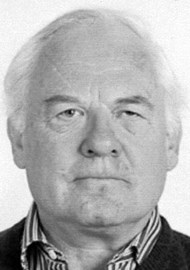The aim of the authors in producing this atlas is not only to give beginners a systematic introduction to the basics of head and neck ultrasonography, but also to provide more experienced users with the opportunity of gaining further in-depth knowledge.
The basis of modern ultrasonography is that employing digital imaging processing and state-of-the-art transducer technology is now able to yield an image quality with submillimetre resolution, which enables even the smallest tissue changes to be seen and which, for certain indications, is superior to that of computed tomography (CT) and magnetic resonance imaging (MRI).
Newer techniques and procedures such as tissue harmonic imaging, compound imaging, elastography, panoramic views and contrast enhanced ultrasound, together with colour Doppler scanning, combined into one system, can provide information not only on the appearance of an organ but also on its activity and function. Traditional imaging investigations require additional information about patients, such as clinical history, laboratory findings, clinical findings on examination, endoscopy and even a result of tissue biopsy.
All of this information is readily available to the treating physician and not to the radiologist, so it would seem more appropriate that the treating physician should be the investigator to perform the diagnostic imaging themselves, and ultrasound scan is the ideal, modern initial imaging technique, minimising treatment delay and unnecessary additional investigations. and of course reducing duplication of images and cost.
The content of the atlas is divided into sections. Section I is an overview of ‘General Considerations’ with four sub-sections devoted to ‘Basic Principles of Ultrasound (US)’, ‘Physical Principles of Doppler and Color Doppler US’, ‘Practical Tips on US Examination Techniques’, ‘Documentation and Terminology’. Section II concentrates on ‘Sonographic Anatomy and Pathology’, sub-sectioned into specific anatomic sites, organs, nerves and vessels; ‘Thyroid Gland’, ‘Neck Lymph Nodes’, ‘Extracranial Nerves’, ‘Floor of Mouth and Oropharynx’, ‘Salivary Glands’, ‘Facial Soft Tissues’, ‘Paranasal Sinuses and Midface’, ‘Larynx and Hypopharynx’ and ‘Extracranial Vessels’. Section III summarises the use of ‘Advanced US Methods’ and comments on the future outlook.
Also included is a ‘Further Reading’ section, which cites some 152 references published up to and including 2010. This atlas has been written by a team of head and neck clinicians and scientists from Erlangen, Germany. The format is very readable with numerous hints and tips and explanations of how to maximise the usage of US to unravel clinical uncertainty and conclude with an accurate diagnosis prior to commencing treatments. US is a dynamic imaging technique and is user dependant. To reflect this, 124 video-clips are available with the book by visiting the web site MediaCentre.thieme.com, and entering a scratch-off code included in the purchase price.
The atlas summarises the opinions and expertise of 20 years of working with US as a diagnostic imaging tool by practising German head and neck clinicians, and should be considered, at this present time, the definitive and landmark publication. However, to become an expert in the usage of US as a diagnostic tool, one needs to have available the appropriate equipment, time and space to incorporate this diagnostic method into daily clinical practice, as well as personal tolerance and patience, a willingness for training and further education, and availability for involvement in third party audit of the appropriateness and accuracy of diagnosis during the learning period. Remember experience only comes with repetition and practice!





